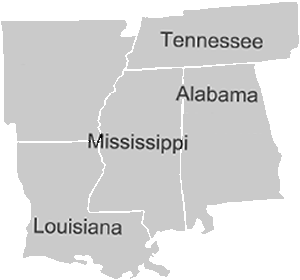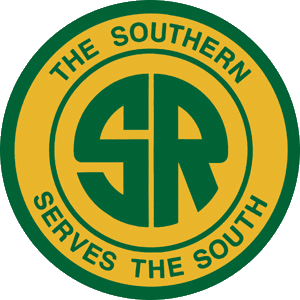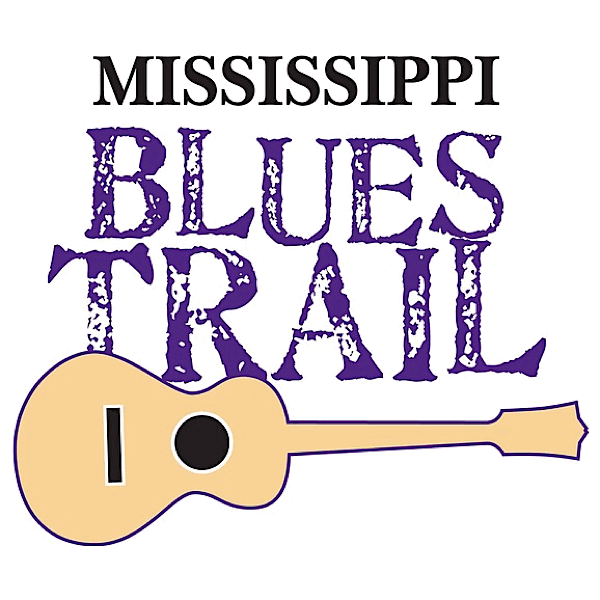










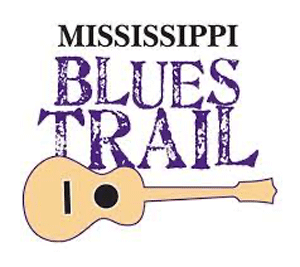 |
Yellow Dog Walking Trail"Where the Southern Crosses the Yellow Dog" |
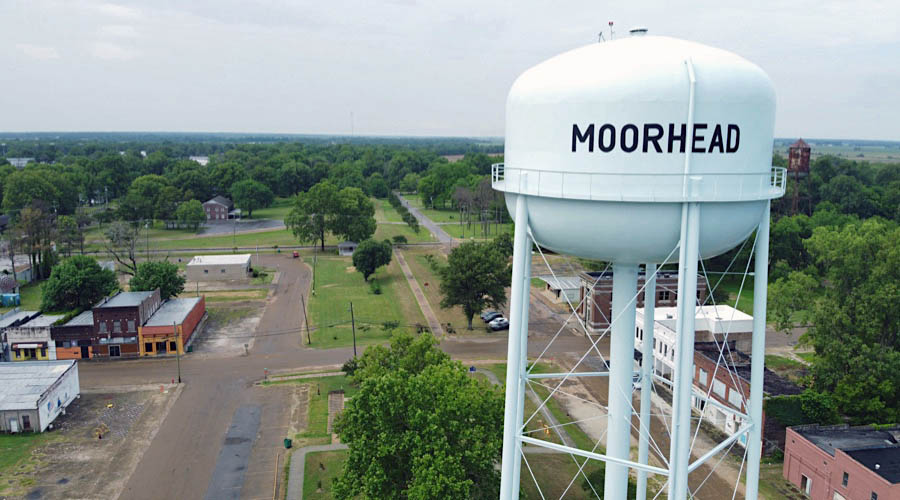
Moorhead, Ms / Jun 2020 / RWH
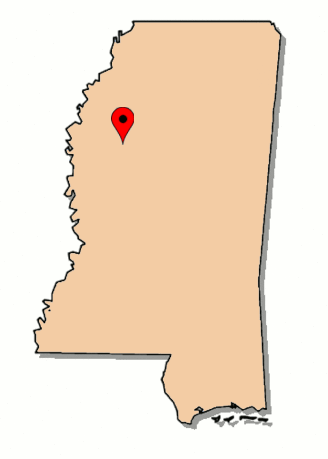 Located in the Mississippi Delta railroad town of Moorhead, the Yellow Dog Walking Trail is a short exercise trail located near the former junction of the Illinois Central and the Columbus & Greenville railroads.
The north-south line that crossed the C&G at Moorhead was originally constructed by the Yazoo Delta Railway, incorporated in 1895. Among turn-of-the-century Sunflower County locals, the little pike was referred to as the "Yellow Dog" — a play on the "Y. D." reporting marks on the Yazoo Delta equipment. Five years after its incorporation, the Yellow Dog was purchased by the larger Yazoo & Mississippi Valley Railroad — which would later be absorbed into the Illinois Central system. Fifteen years later, having travelled through the Mississippi Delta, famed muscian W. C. Handy published a song entitled "The Yellow Dog Rag," noting that "he's gone where the Southern cross the Yellow Dog." The "Southern" here referred to the Southern Railway in Mississippi, predecessor to the Columbus & Greenville. The small Y&MV depot still stands, and is the center of the walking trail area.
Located in the Mississippi Delta railroad town of Moorhead, the Yellow Dog Walking Trail is a short exercise trail located near the former junction of the Illinois Central and the Columbus & Greenville railroads.
The north-south line that crossed the C&G at Moorhead was originally constructed by the Yazoo Delta Railway, incorporated in 1895. Among turn-of-the-century Sunflower County locals, the little pike was referred to as the "Yellow Dog" — a play on the "Y. D." reporting marks on the Yazoo Delta equipment. Five years after its incorporation, the Yellow Dog was purchased by the larger Yazoo & Mississippi Valley Railroad — which would later be absorbed into the Illinois Central system. Fifteen years later, having travelled through the Mississippi Delta, famed muscian W. C. Handy published a song entitled "The Yellow Dog Rag," noting that "he's gone where the Southern cross the Yellow Dog." The "Southern" here referred to the Southern Railway in Mississippi, predecessor to the Columbus & Greenville. The small Y&MV depot still stands, and is the center of the walking trail area.

1893 Official Guide ad / collection
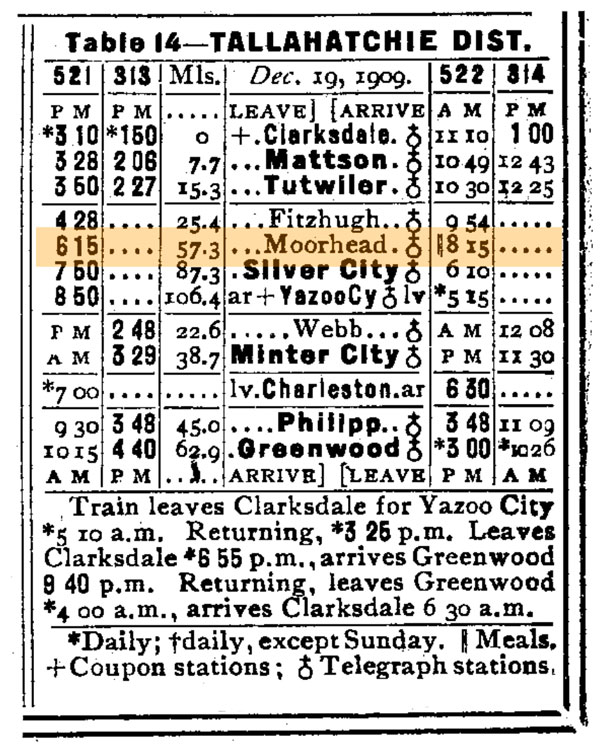
1910 Official Guide Y&MV ad / collection
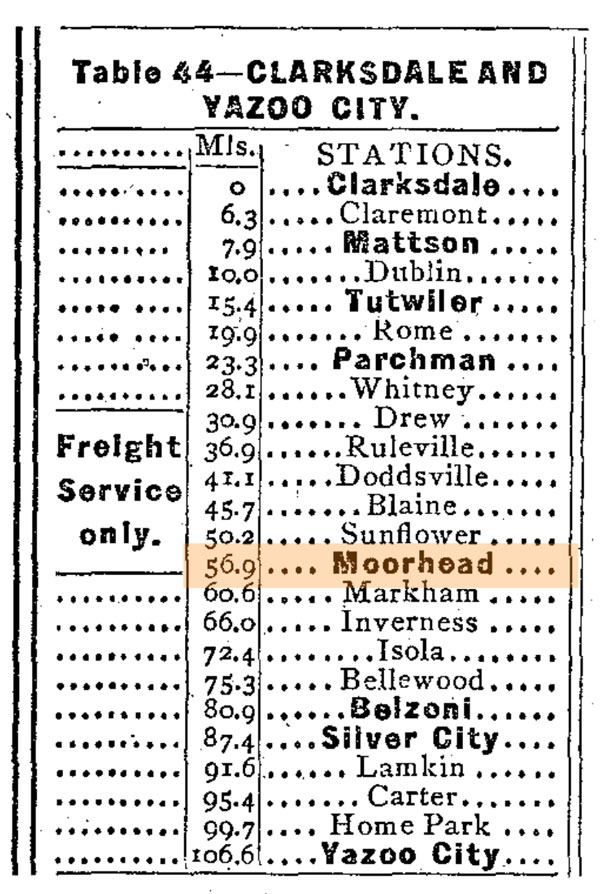
1945 Official Guide IC ad / collection
 Yellow Dog Blues
Yellow Dog Blues
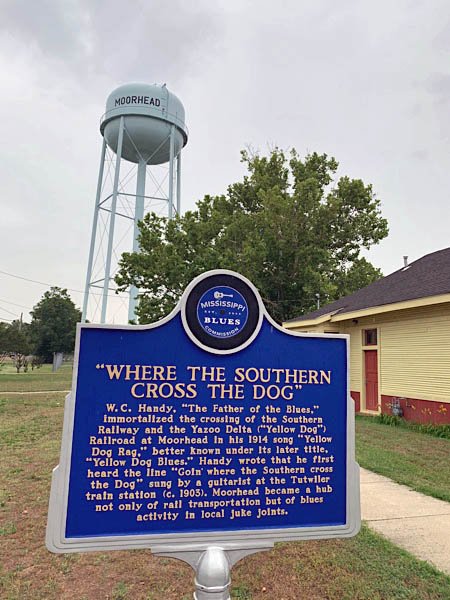
Jun 2020 / RWH
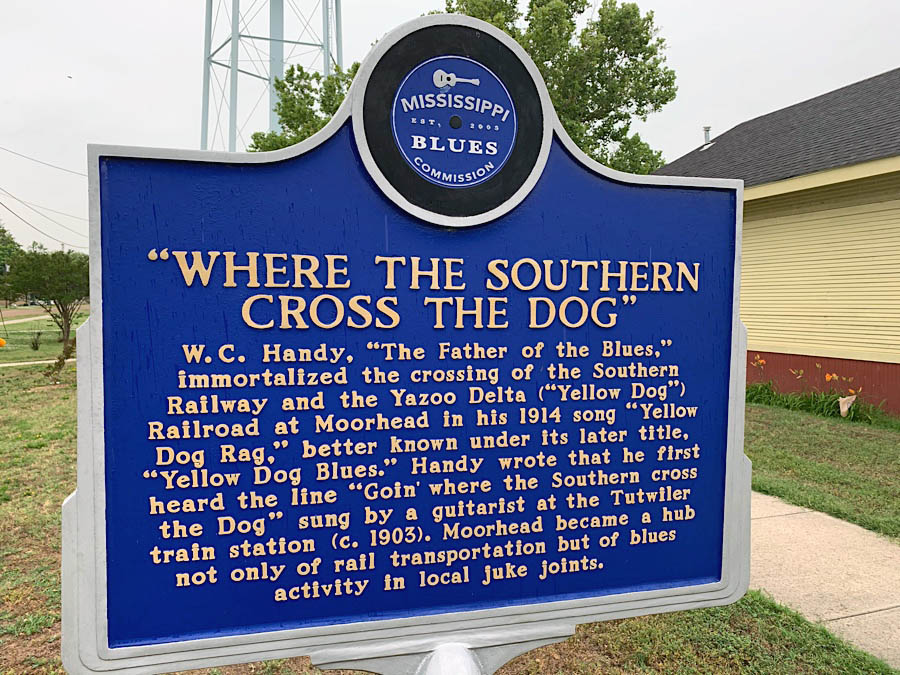
Moorhead, Ms / Jun 2020 / RWH

collection

Where the Southern Cross the Dog - Moorhead
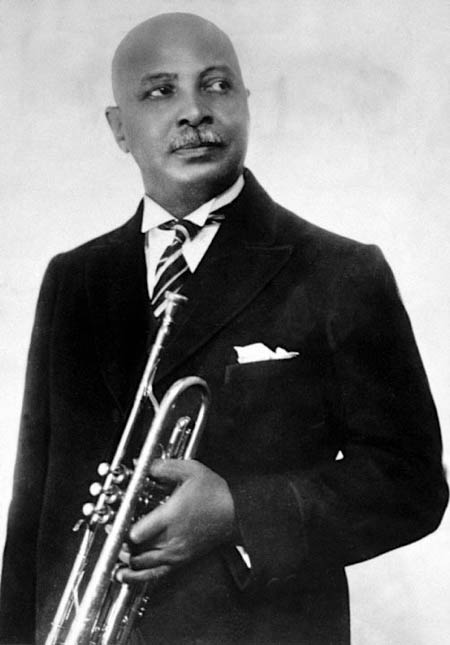 W. C. Handy, "The Father of the Blues," immortalized the crossing of the Southern Railway and the Yazoo Delta ("Yellow Dog") Railroad at Moorhead in his 1914 song "Yellow Dog Rag," better known under its later title, "Yellow Dog Blues." Handy wrote that he first heard the line "Goin' where the Southern cross the Dog" sung by a guitarist at the Tutwiler train station (c. 1903). Moorhead became a hub not only of rail transportation but of blues activity in local juke joints.
W. C. Handy, "The Father of the Blues," immortalized the crossing of the Southern Railway and the Yazoo Delta ("Yellow Dog") Railroad at Moorhead in his 1914 song "Yellow Dog Rag," better known under its later title, "Yellow Dog Blues." Handy wrote that he first heard the line "Goin' where the Southern cross the Dog" sung by a guitarist at the Tutwiler train station (c. 1903). Moorhead became a hub not only of rail transportation but of blues activity in local juke joints.
Moorhead was a thriving frontier town in the late 1890s built upon the local lumber trade, and an important stop on the Southern Railway in Mississippi. The Yazoo Delta Railway was incorporated in 1895 by Chester Pond of the Moorhead Improvement Company, who previously owned a narrow gauge railway used to transport logs and lumber to and from his mill. The “Y.D.” opened in August of 1897 with 20.5 miles of track running north from Moorhead to Ruleville; in 1900 the railway was incorporated into the Yazoo & Mississippi Valley Railroad (Y&MV), a subsidiary of the Illinois Central Railroad, and extended from Ruleville to Tutwiler and south to Belzoni. The origin of the nickname “Yellow Dog” is debated. The most common explanation is that it stemmed from yellow-painted rolling stock bearing the initials “Y.D.”; other theories include the barking of an actual yellow dog, connections with the political term “yellow dog Democrat,” non-union labor, and railway lore of “dog” as a short line (another Delta branch of the Y&MV was called the “Black Dog”). Despite the Yazoo Delta’s brief existence the name “Yellow Dog” continued to be applied to the Y&MV and became an iconic symbol of the Delta and railway lore.
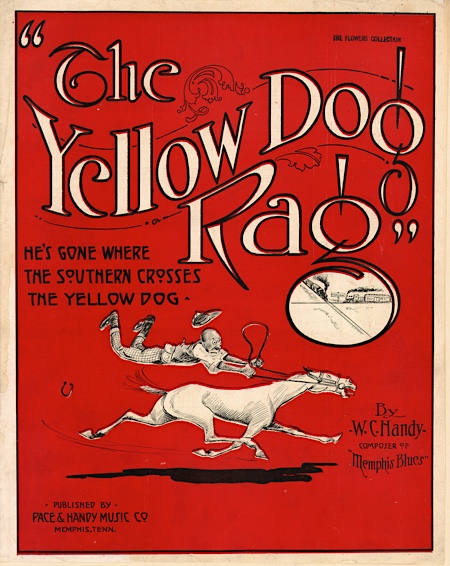 The assertive rhythms of trains were stylistic foundations for blues and jazz. In early blues lyrics trains figure importantly both as literal objects and as metaphors for topics including escape and long distance, as illustrated through W.C. Handy’s “Yellow Dog Blues” and other songs that refer to the crossing or the Yellow Dog, including Big Bill Broonzy’s “Southern Blues,” Charley Patton’s “Green River Blues,” Lucille Bogan’s “Pay Roll Blues,” and Sam Collins’ “Yellow Dog Blues,” a different song from Handy’s. The creation of a railway crossroads in Moorhead spurred the development of restaurants and hotels here. At its peak eight passenger trains a day passed through Moorhead; white passengers could take luxurious Pullman cars from here to Memphis on the Y&MV, while African Americans rode in separate cars. Moorhead became a bustling town, especially on Saturday nights, as local resident Jim Harrison recalled: “A few white folks and many, many black folks came to town to celebrate the end of a hard week of manual labor. They shopped, socialized, and generally turned the town into a mini-Mardi Gras. The streets and sidewalks were so packed you could hardly walk.” Howlin’ Wolf and Robert Johnson reportedly played together in Moorhead in the 1930s, and bluesman Booker Miller recalled hearing Willie Brown here. Musicians who lived in the Moorhead area include Charley Booker (1919-1989), Eli Green (1897-1968), James “Boo Boo” Davis (b. 1943), Chicago bluesman Willie Hudson (b. 1942), southern soul vocalists Chris Ivy aka “Mr. Ivy” (b. 1976) and Jimmy Hicks (b. 1938), and gospel singer Brother O’Neal.
The assertive rhythms of trains were stylistic foundations for blues and jazz. In early blues lyrics trains figure importantly both as literal objects and as metaphors for topics including escape and long distance, as illustrated through W.C. Handy’s “Yellow Dog Blues” and other songs that refer to the crossing or the Yellow Dog, including Big Bill Broonzy’s “Southern Blues,” Charley Patton’s “Green River Blues,” Lucille Bogan’s “Pay Roll Blues,” and Sam Collins’ “Yellow Dog Blues,” a different song from Handy’s. The creation of a railway crossroads in Moorhead spurred the development of restaurants and hotels here. At its peak eight passenger trains a day passed through Moorhead; white passengers could take luxurious Pullman cars from here to Memphis on the Y&MV, while African Americans rode in separate cars. Moorhead became a bustling town, especially on Saturday nights, as local resident Jim Harrison recalled: “A few white folks and many, many black folks came to town to celebrate the end of a hard week of manual labor. They shopped, socialized, and generally turned the town into a mini-Mardi Gras. The streets and sidewalks were so packed you could hardly walk.” Howlin’ Wolf and Robert Johnson reportedly played together in Moorhead in the 1930s, and bluesman Booker Miller recalled hearing Willie Brown here. Musicians who lived in the Moorhead area include Charley Booker (1919-1989), Eli Green (1897-1968), James “Boo Boo” Davis (b. 1943), Chicago bluesman Willie Hudson (b. 1942), southern soul vocalists Chris Ivy aka “Mr. Ivy” (b. 1976) and Jimmy Hicks (b. 1938), and gospel singer Brother O’Neal.

Moorhead, Ms / Jun 2020 / RWH
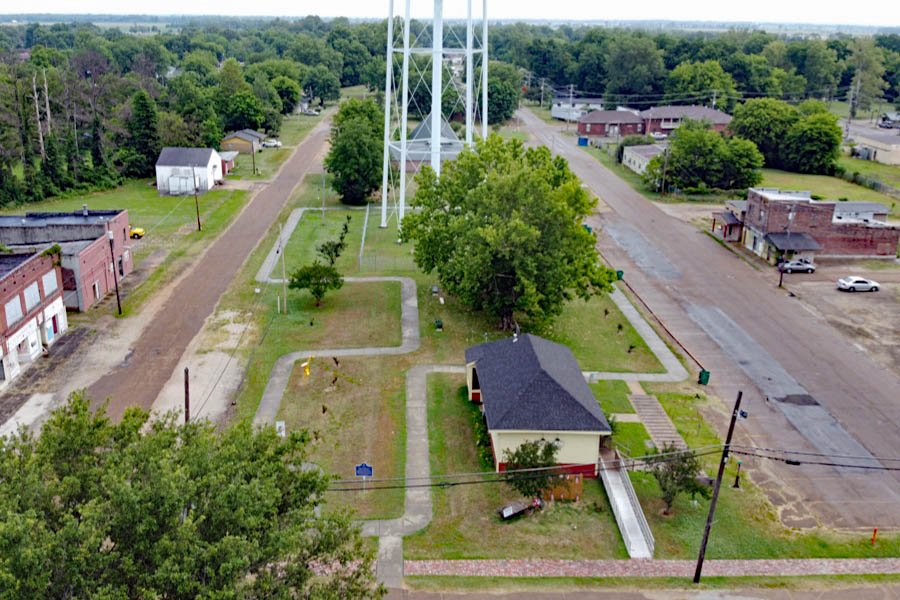
Moorhead, Ms / Jun 2020 / RWH

Click to see the Yellow Dog Walking Trail plotted on a Google Maps page

Moorhead, Ms / Jun 2020 / RWH
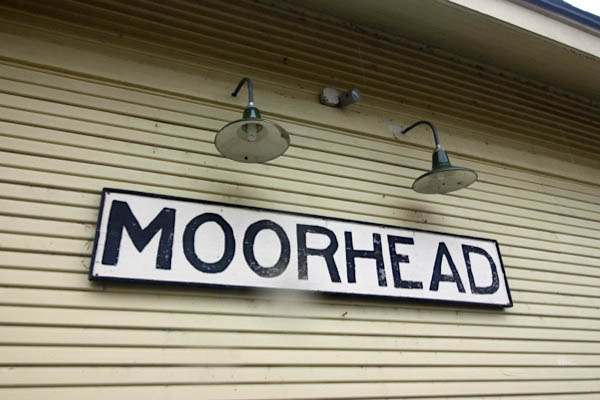
Jun 2020 / RWH
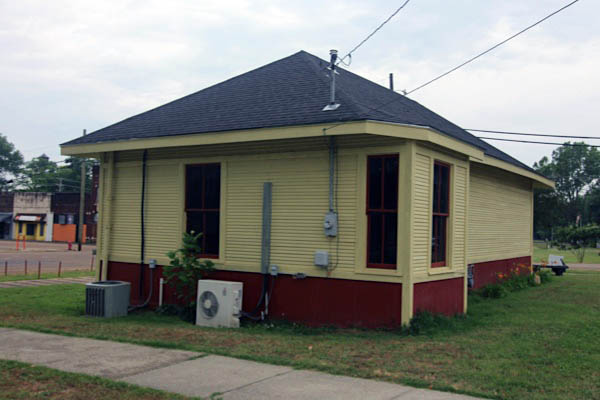
Moorhead, Ms / Jun 2020 / RWH
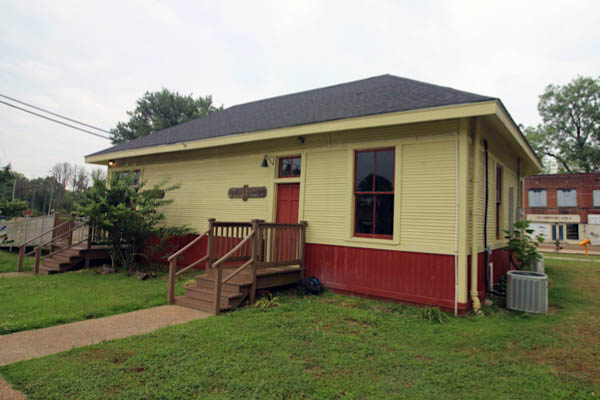
Moorhead, Ms / Jun 2020 / RWH
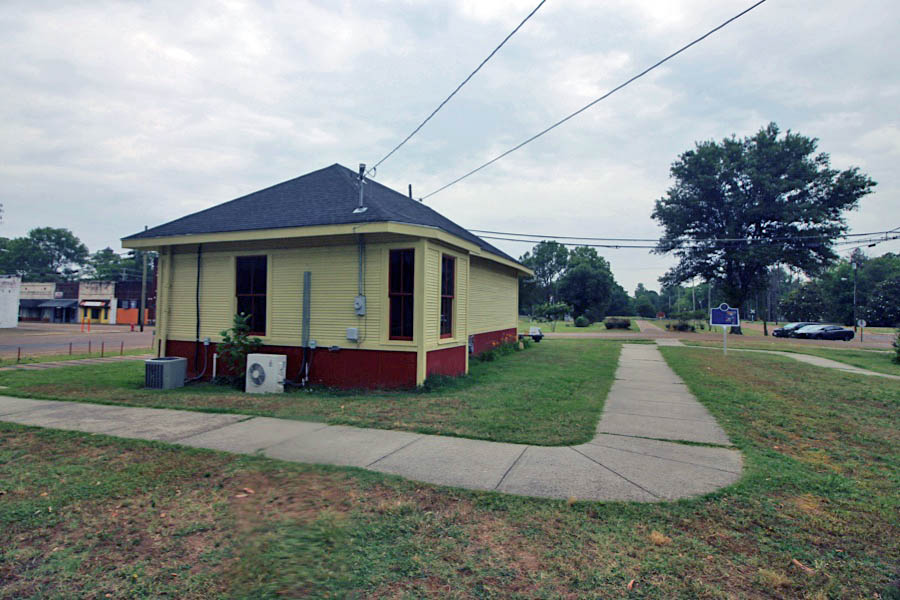
Moorhead, Ms / Jun 2020 / RWH

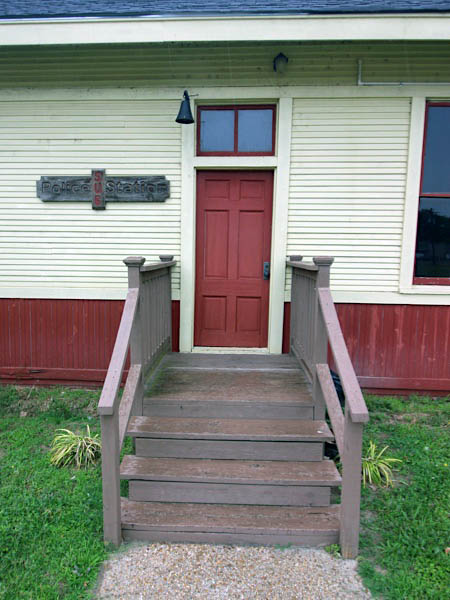

Jun 2020 / RWH
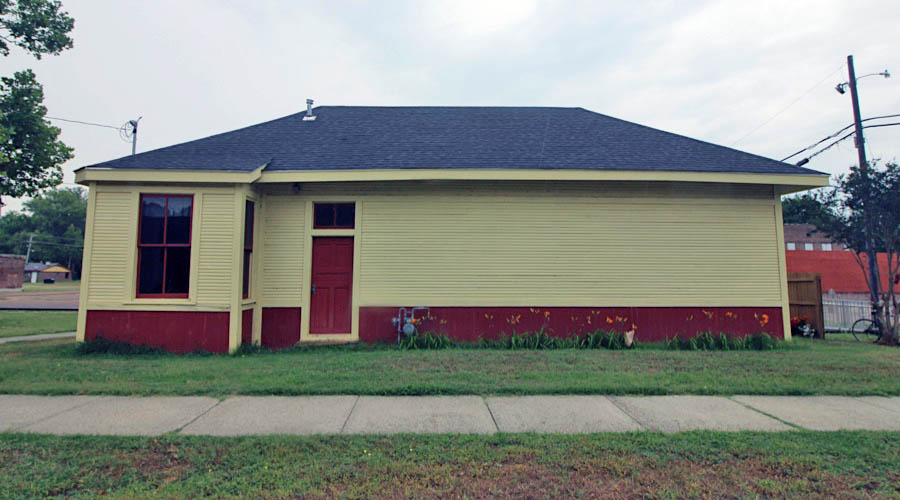
Moorhead, Ms / Jun 2020 / RWH
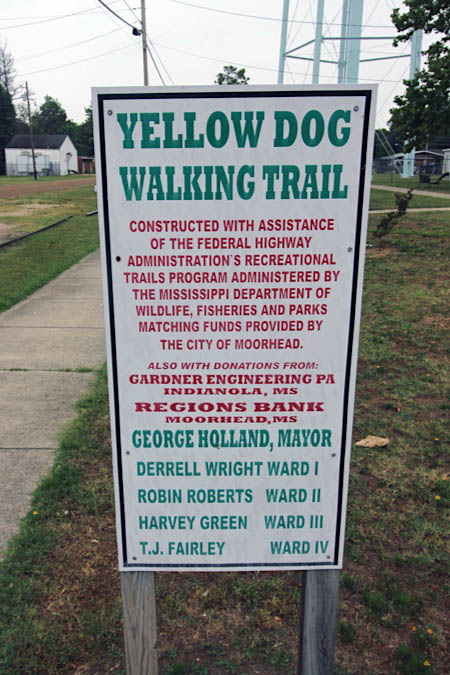
Moorhead, Ms / Jun 2020 / RWH
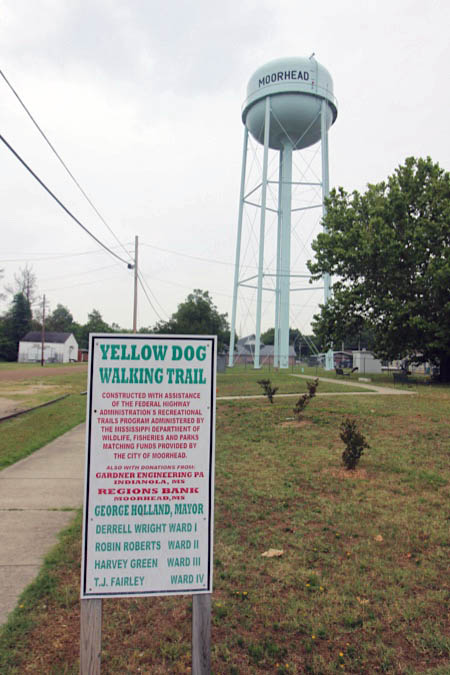
Moorhead, Ms / Jun 2020 / RWH
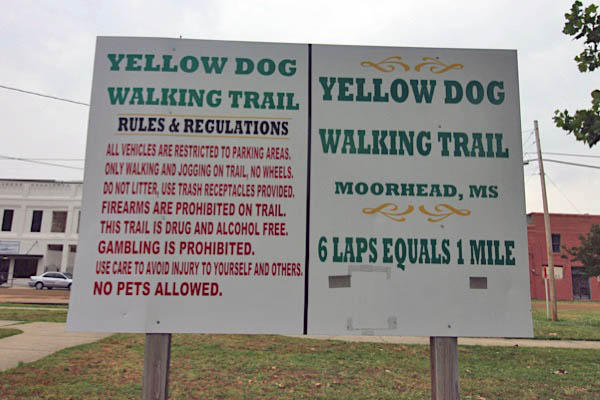
Jun 2020 / RWH
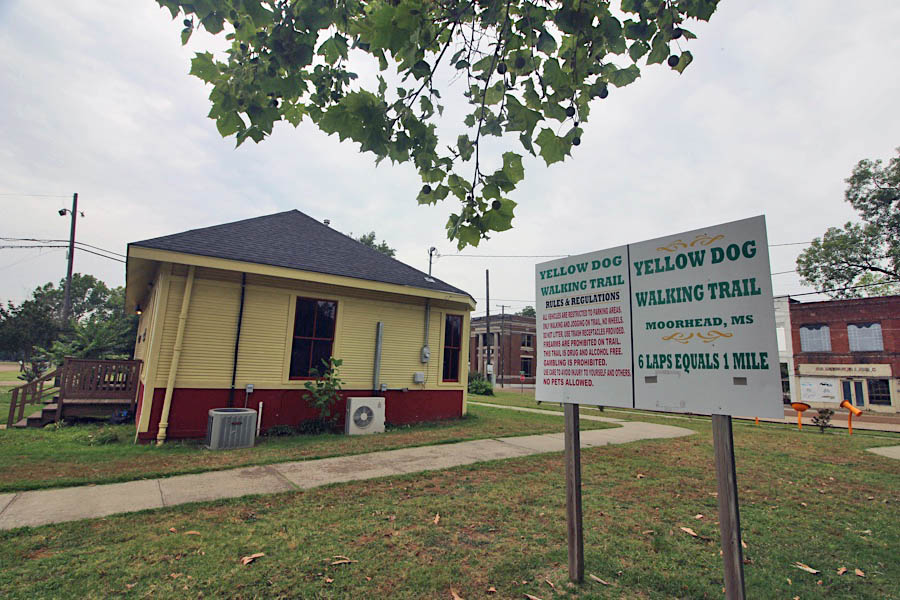
Moorhead, Ms / Jun 2020 / RWH
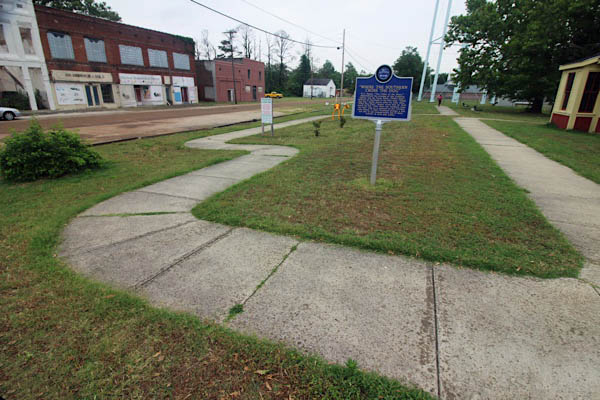
Moorhead, Ms / Jun 2020 / RWH
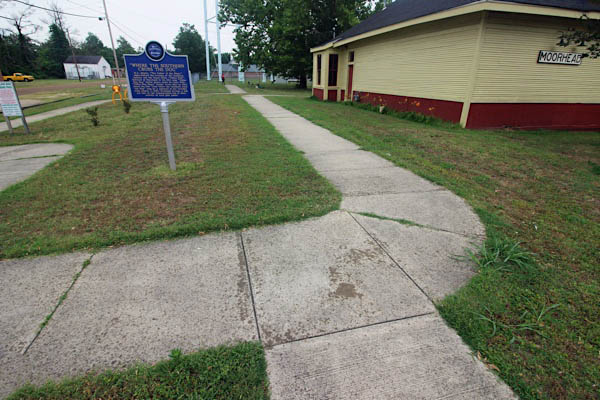
Moorhead, Ms / Jun 2020 / RWH
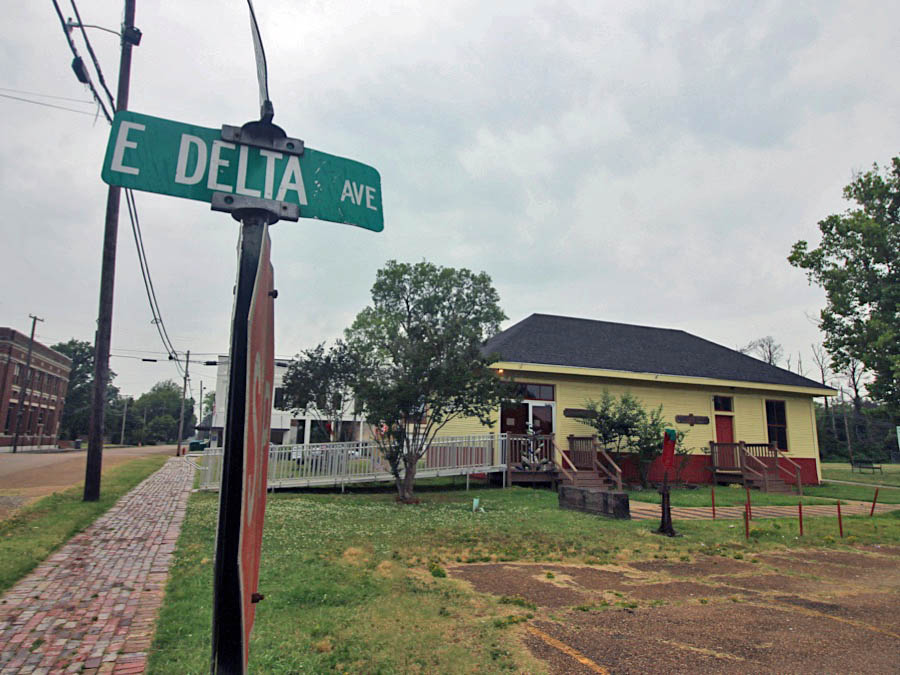
Moorhead, Ms / Jun 2020 / RWH
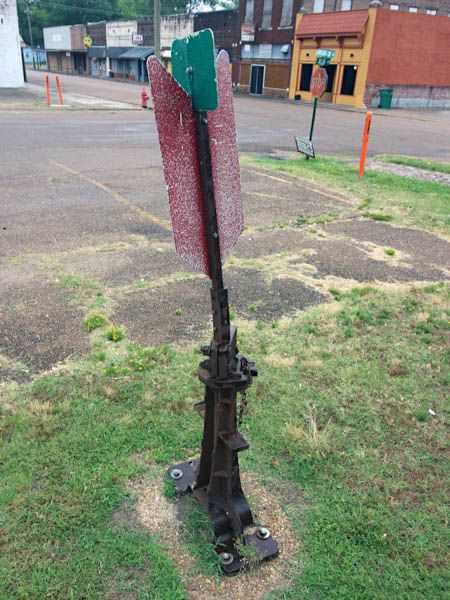
Jun 2020 / RWH
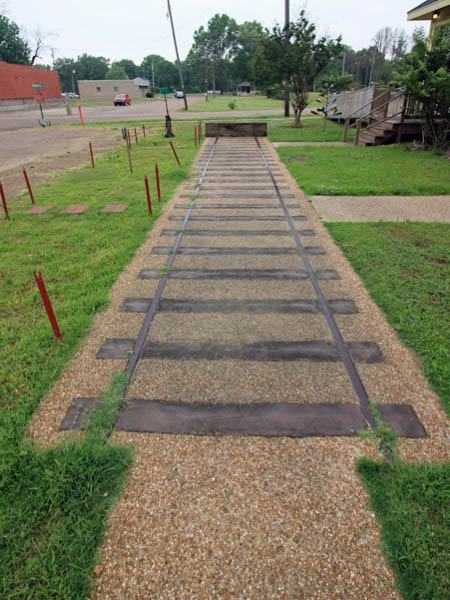
Jun 2020 / RWH
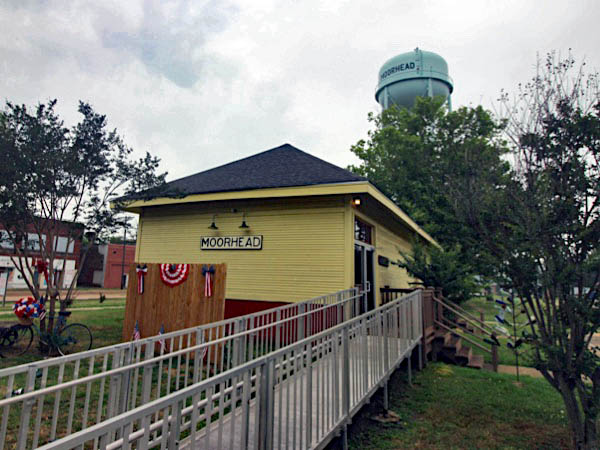
Moorhead, Ms / Jun 2020 / RWH
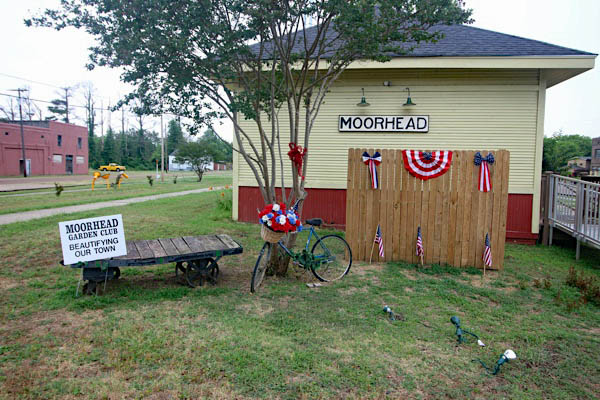
Moorhead, Ms / Jun 2020 / RWH
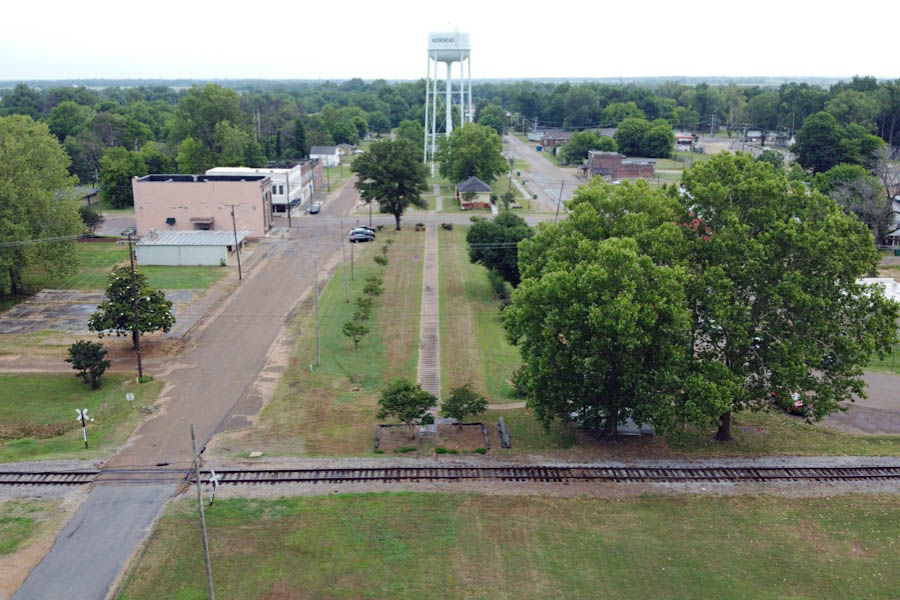
Moorhead, Ms / Jun 2020 / RWH
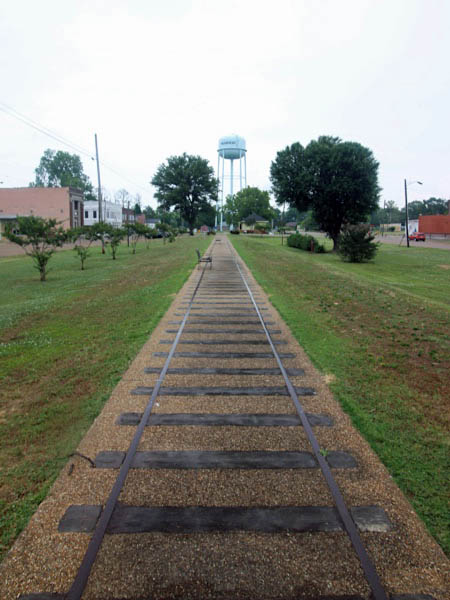
Jun 2020 / RWH
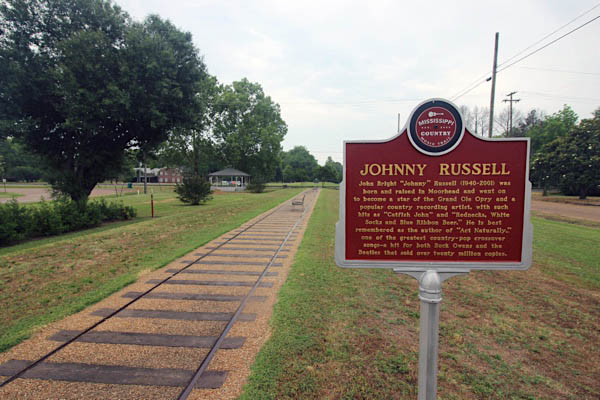
Moorhead, Ms / Jun 2020 / RWH
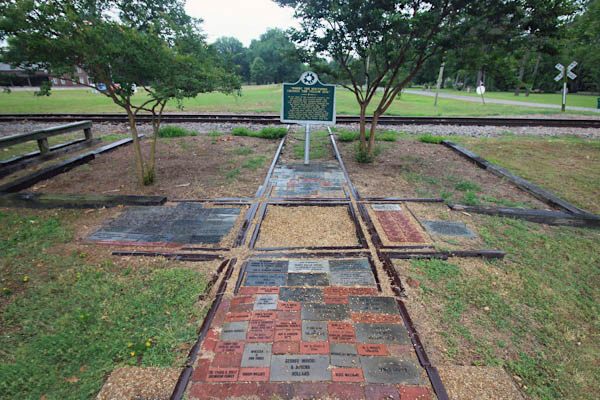
Moorhead, Ms / Jun 2020 / RWH
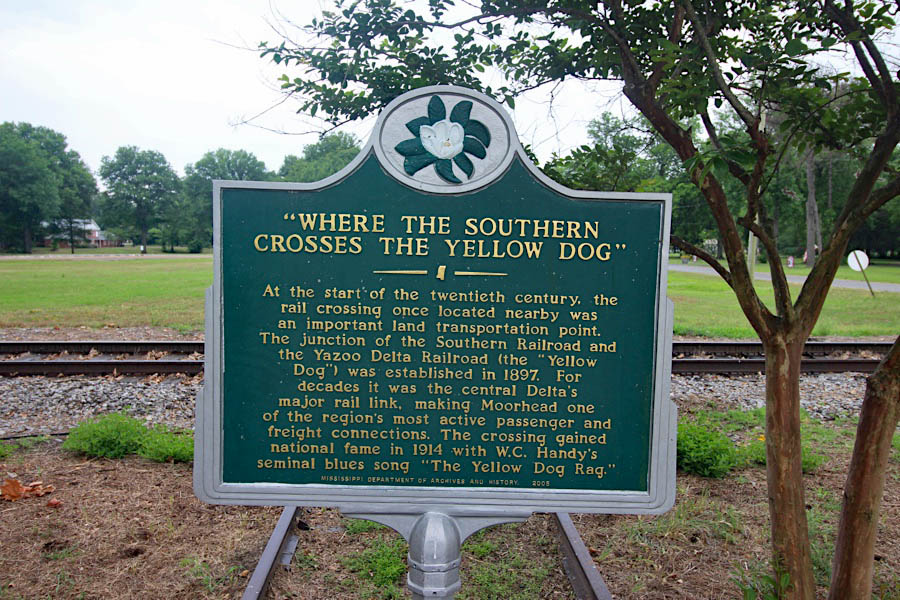
Moorhead, Ms / Jun 2020 / RWH
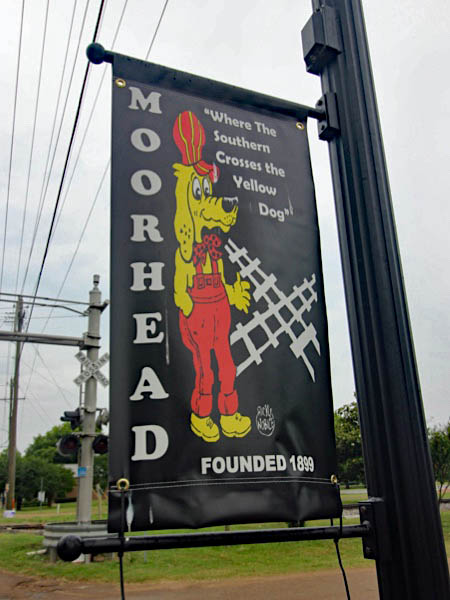
Jun 2020 / RWH

See also our Columbus & Greenville Western Towns scrapbook for more Moorhead materials
Links / Sources
- "Where the Southern Cross the Dog" — Mississippi Blues Commission
- Wikipedia article for Yellow Dog Blues
- Wikipedia article for Yazoo & Mississippi Valley Railroad

